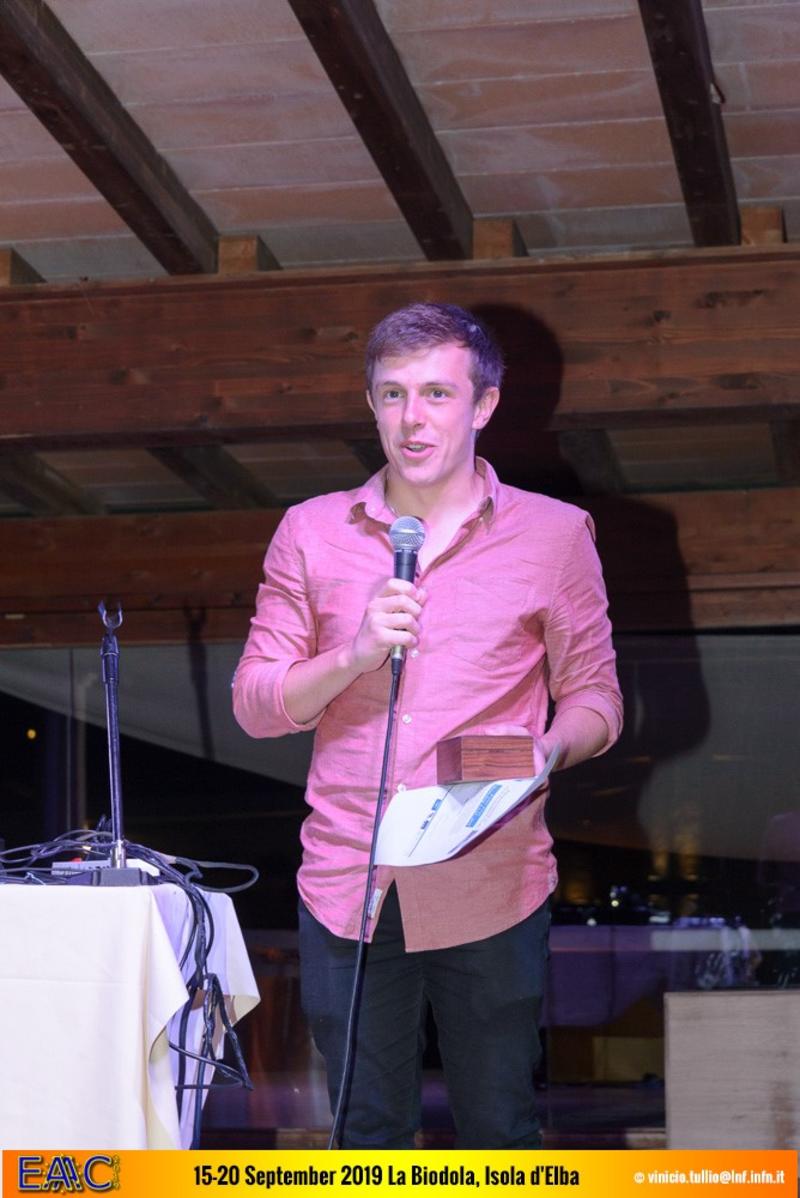At the recent European Advanced Accelerator Concepts conference, DPhil student Alex Picksley was awarded the poster prize for his contribution. The award, presented by Bernhard Holzer, was given “In acknowledgement of an important contribution to the Studies in Novel Acceleration Techniques and for an outstanding Poster”.
Alex is studying the formation of long (> 100 mm) plasma channels suitable for accelerating charged particles in laser plasma accelerators (LPAs). To date, a key limit of LPAs is the diffraction of laser pulses. To generate the ultra-high intensities required to accelerate charged particles, laser pulses must be focused down to a very small spot, but after this happens, the spot begins to grow and quickly lose intensity. This process, called diffraction, limits the distance over which charged particles can be accelerated, and limits the maximum energies they can reach.
Plasma channels act like optical fibres for ultra-intense laser pulses – they can guide the pulses over long distances and maintain their intensity over that distance, overcoming diffraction. In our recent experiments, we demonstrated a new technique for generating plasma channels. An ultra-short laser pulse is fired at a gas target, ionising and heating the electrons in the gas to extremely high temperatures – temperatures that you might usually only expect to find on the surface of the sun. These hot electrons make a blast wave and expand outwards rapidly, and when this happens a plasma channel is formed.
The poster here presented results of our recent experiment, on the Gemini Laser at the Central Laser Facility, the UK’s most powerful shot-pulse laser. All of the members of the Oxford LPAG group, along with collaborators from University of Liverpool and University of Maryland worked together for six weeks to demonstrate the generatation of long plasma channels. We hope to publish the results of this exciting experiment soon.

